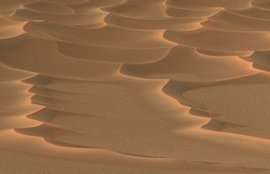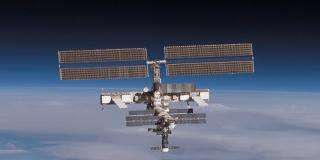Sci-fi Life Support

In Frank Herbert's epic ecological novel Dune (1965), set on the fictitious desert planet Arrakis in another star system, water is so precious that even perspiration and breath moisture are captured and purified for drinking.
On real-life voyages to the Moon and Mars, science fact may end up imitating science fiction. Indeed, scientists and engineers at NASA's Marshall Space Flight Center (MSFC) are putting the finishing touches on systems for capturing exhaled carbon dioxide and urine and turning them into breathable oxygen and drinking water.
"Early space missions—Mercury, Gemini, Apollo—took with them all the water and oxygen they needed and discarded liquid and gaseous wastes into space," explains Robert Bagdigian of the MSFC. In short, the astronauts' life-support systems were "open-loop"—meaning they relied on resupply from Earth, something still true for the International Space Station, today.
But for any long-duration missions to the Moon or Mars, "it makes sense to close the loop"—that is, to recycle air and waste water instead of just discarding them. Soon the ISS will be testing just such a regenerative system.
The name of the project is Environmental Control and Life Support Systems--better known by its acronym ECLSS (pronounced"EE-cliss"). Bagdigian is the ECLSS project manager.
"The Russians are ahead of us," says Robyn Carrasquillo, engineering manager for ECLSS. "The original Salyut and Mir spacecraft were able to condense humidity right out of the air and use electrolysis—an electric current run through the water—to produce oxygen for breathing." NASA's new regenerative ECLSS, to be launched to ISS in 2008, goes further: "it can recover urine in addition to humidity."

Urine recovery is an engineering challenge: "Urine is so much dirtier than ordinary humidity," Carrasquillo explains. "It can corrode hardware and clog hoses." ECLSS uses a purification process called vapor compression distillation: urine is boiled until the water in it turns to steam. The steam—essentially clean water vapor except for some traces of ammonia and other gases—rises into a distillation chamber, leaving behind a concentrated brown soup of impurities and salts that Carrasquillo charitably calls "brine" (which is discarded). The steam is cooled and condenses back into liquid. This steam distillate is then mixed with the humidity condensate, and the water further purified to become potable. ECLSS can recover 100 percent of moisture in the air, and 85 percent of the water in urine, resulting in a net overall recovery efficiency of about 93 percent.
That's how it works on Earth. In space, there's an additional challenge: "steam doesn't rise." Buoyancy requires gravity, and in the microgravity of a spaceship, steam just "sits there." It doesn't rise naturally into the distillation chamber. So in the version of ECLSS being completed at Marshall for ISS, "we spin the entire distillation system to create artificial gravity to separate the steam from the brine," says Carrasquillo.
Moreover, in microgravity human hairs, skin cells, lint, and other impurities float around in the air instead of falling to the floor. Thus, the processor requires an impressive filtration system. When clean water emerges at the end, iodine is added to retard the growth of microbes (chlorine, used to purify water on Earth, is too reactive and hazardous to store and handle in space).

The regenerative water recovery system for ISS, weighing about a ton and a half, will "produce half a gallon an hour, more than the current of crew three needs," Carrasquillo says. "This will enable the space station to support a total of six astronauts continuously." The system is designed to produce potable water "meeting purity standards better than most municipal water systems on the ground," Bagdigian adds.
In addition to providing drinking water for the crew, the water recovery system will supply water to the other half of ECLSS: the oxygen generation system (OGS). The OGS operates by electrolysis. It splits water molecules into oxygen for breathing and hydrogen, which is vented outside the spacecraft. "The air loop needs pretty clean water, so the electrolyte cells don't get contaminated and foul," Bagdigian points out.
"Regeneration is far more cost-effective than resupplying the station with water from Earth," Carrasquillo says, especially after the space shuttle is retired in 2010.
Recycling up to 93 percent wastewater is impressive. But for missions of months or years to the Moon or Mars, some later version of ECLSS must achieve closer to 100 percent efficiency.
Then, astronauts would be ready to survive on our own solar system's versions of Dune.
Source: Science@NASA, by Trudy E. Bell





















